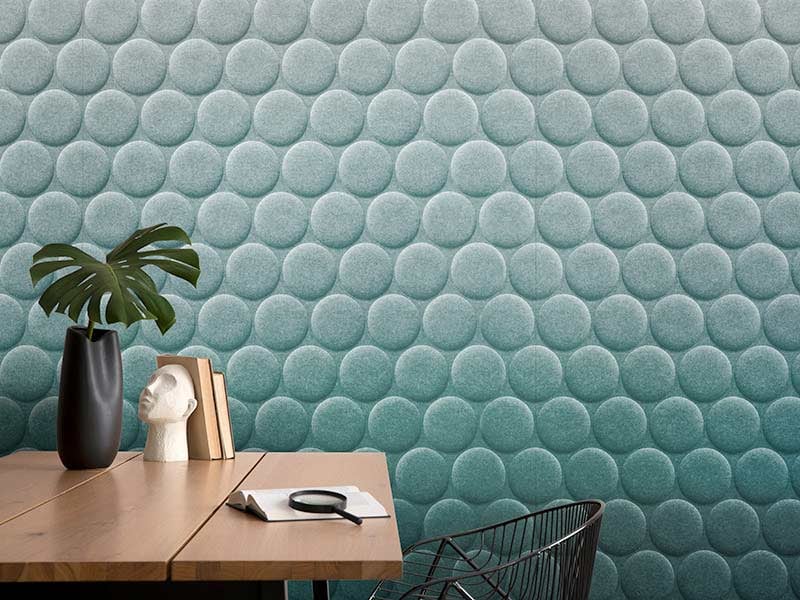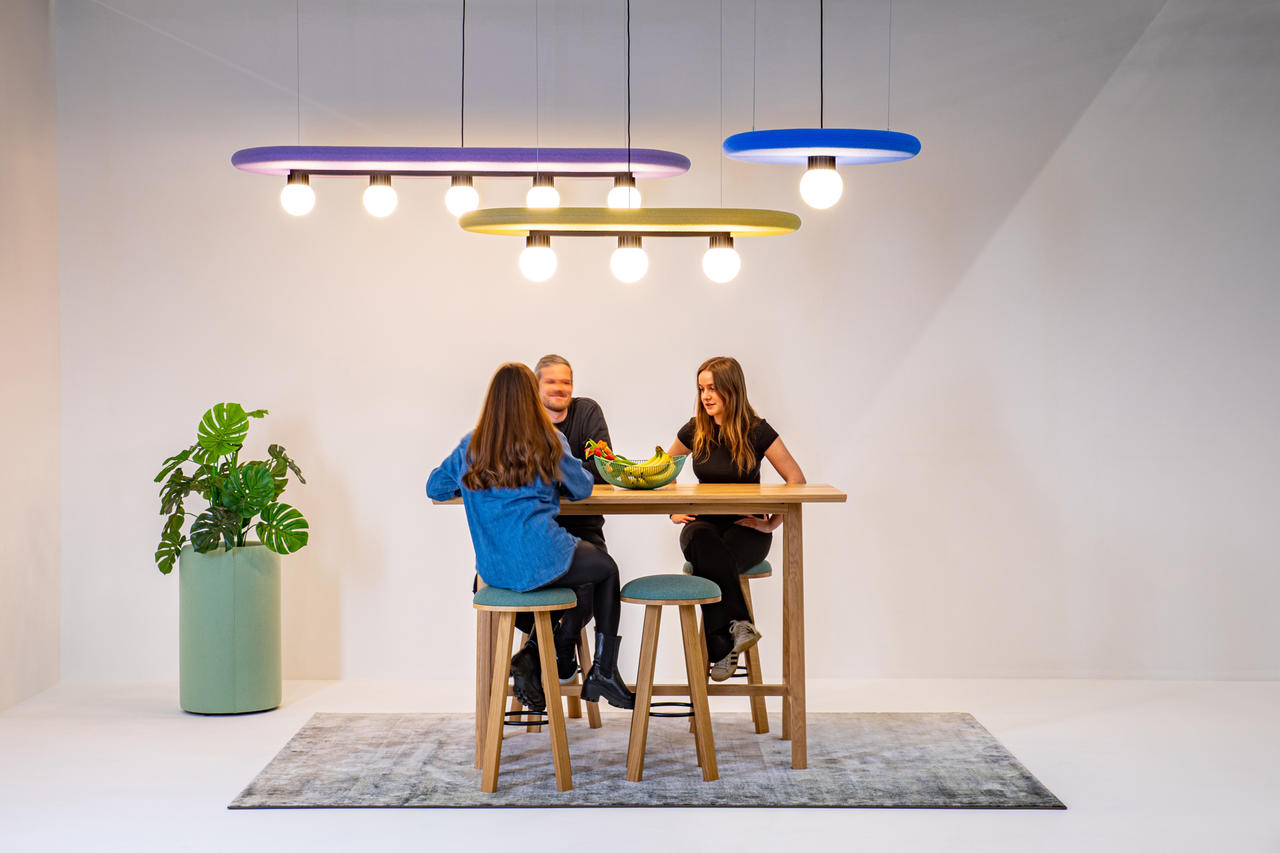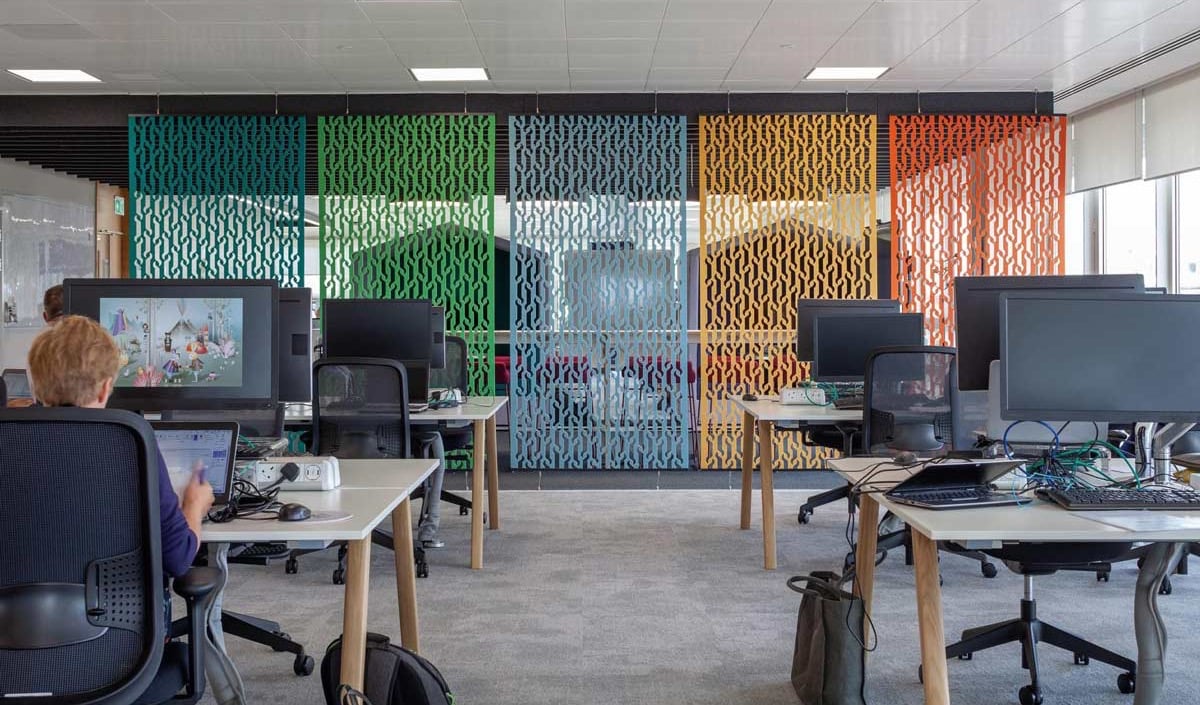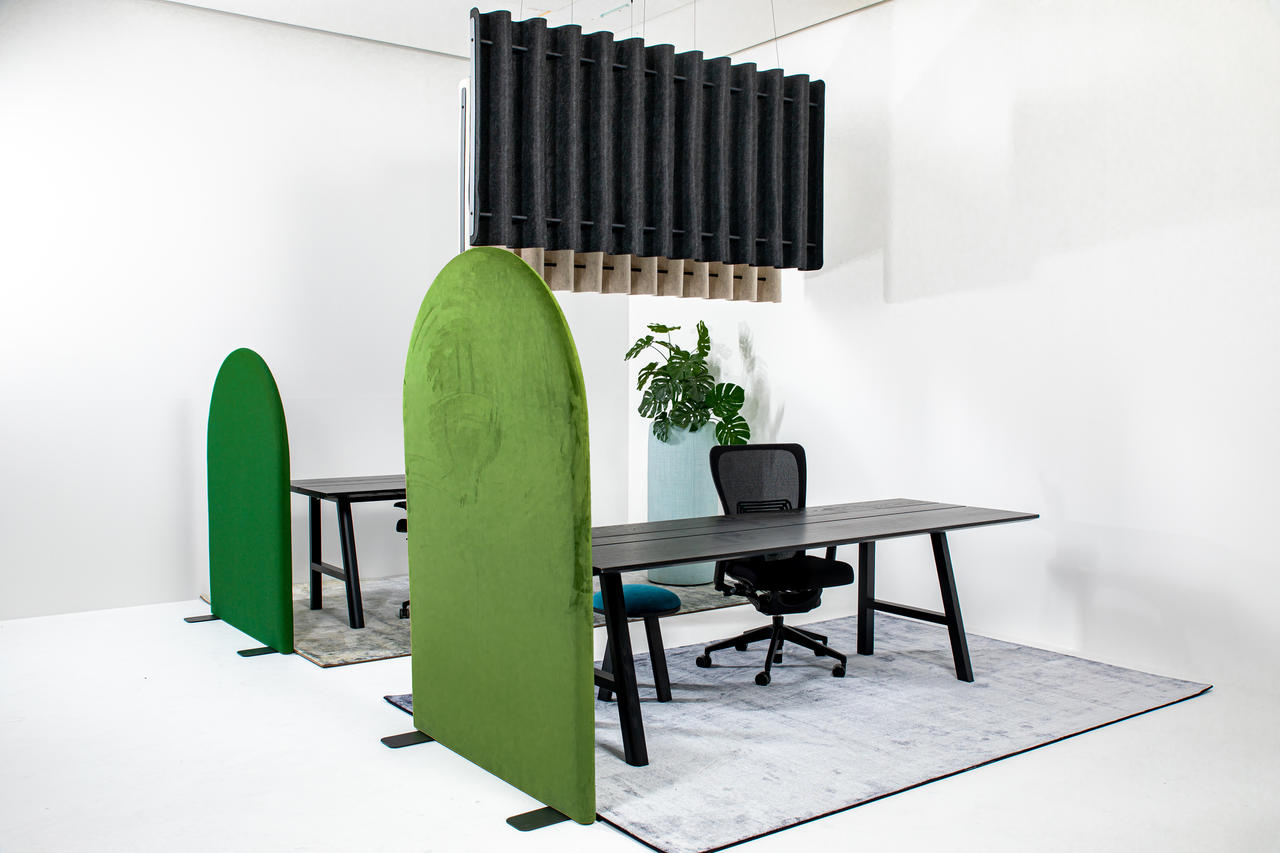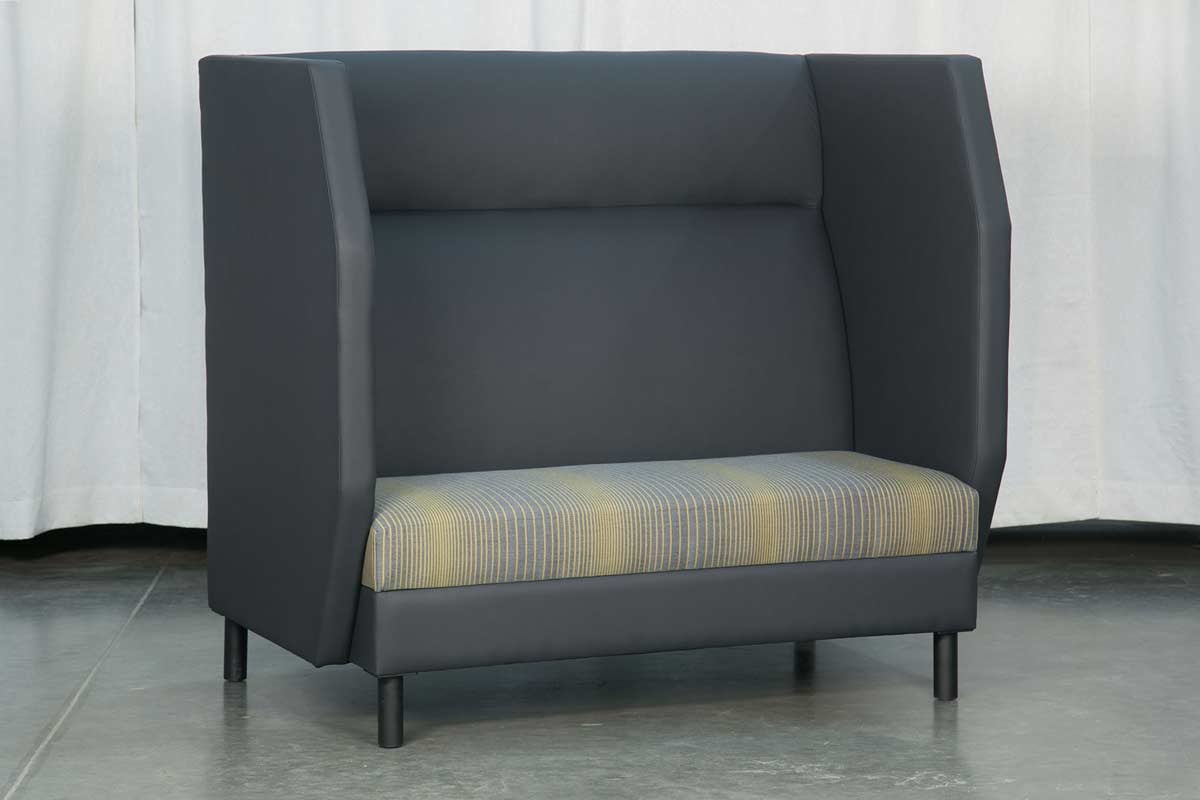In the ever-evolving landscape of workspace design, the role of acoustics is both crucial and often overlooked. The auditory environment has a profound impact on employee productivity, concentration, and overall well-being. Social spaces are particularly susceptible to acoustic challenges. Noise disruptions in these areas can hinder focus and productivity, turning bustling hubs into sources of frustration. Here we delve into the importance of acoustics in workspace design, the impact of social spaces on employee well-being and productivity, and provide a roadmap to harmonious audioscapes in the office environment.
Muto acoustic walls from Soelberg.
BuzziSurf acoustic pendant lights from BuzziSpace
Understanding the Acoustic Challenge in Social Spaces
In addressing the acoustic challenge within workspaces, it's crucial to understand the various types of noise present in social spaces. Conversations among employees, background noise from equipment, and the hum of technology can all contribute to the auditory environment. However, each of these sounds can become disruptive when excessive, resulting in stress and reduced focus for employees. The constant bombardment of noise can even decrease collaboration, as employees might avoid social spaces to escape the clamor. In contrast, well-designed acoustic environments offer numerous benefits. They create a sense of comfort and ease, allowing employees to engage in productive conversation without raising their voices. Additionally, well-managed acoustics improve communication by reducing background noise, making conversations more clear and enjoyable. Thus, understanding and addressing the acoustic challenge is paramount to fostering a productive and harmonious workspace.
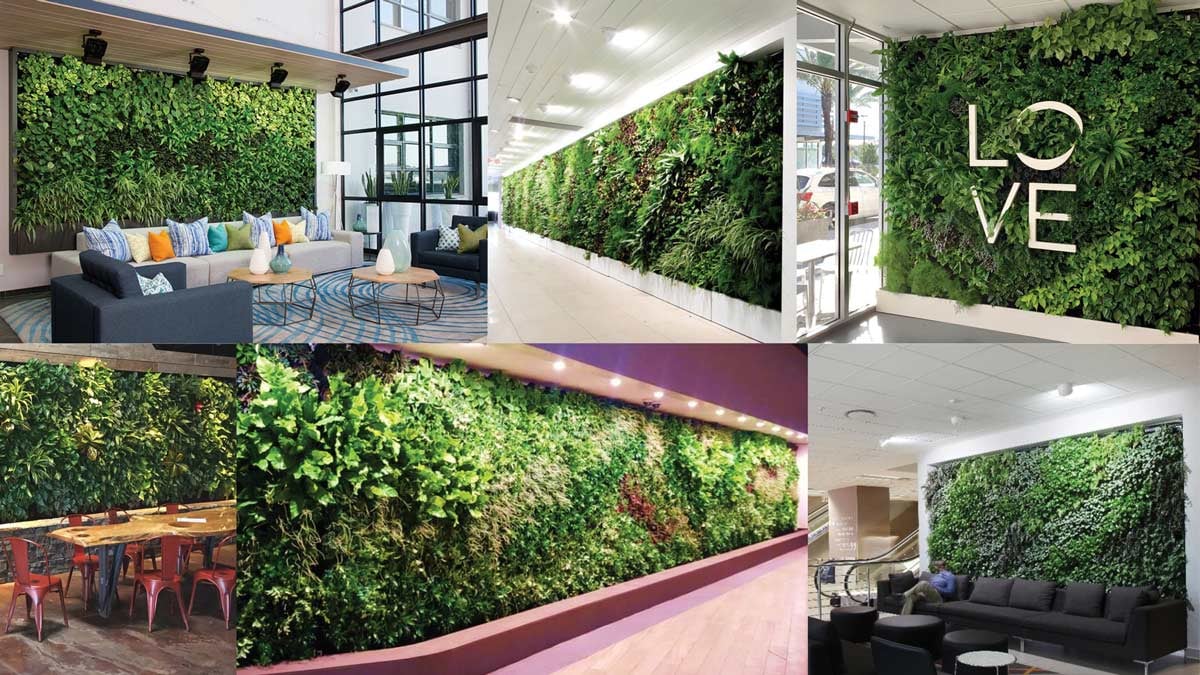
Custom living green walls from Platform.
Sound absorbing panels from Autex Acoustics.
Acoustic Materials and Layout
In the realm of acoustic optimization, the choice of materials and the design layout play a pivotal role. Sound-absorbing materials such as acoustic panels, ceiling tiles, and carpets can dramatically reduce noise levels. These materials work by minimizing the reflection of sound waves, helping to create a quieter environment.
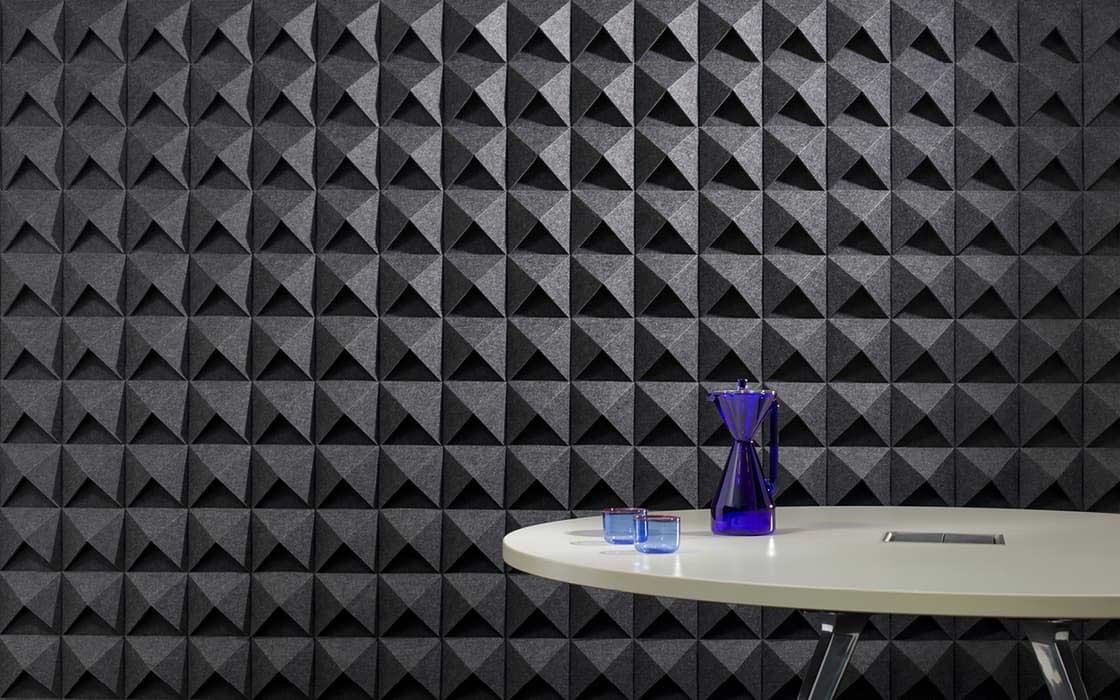
Wolf Gordon Gather noise reducing acoustical panels
Soft furnishings like padded chairs and sofas, sound-absorbing lighting fixtures, soft material desk dividers, and green walls can also assist in noise reduction by absorbing sound reflections. These elements not only contribute to a comfortable and aesthetically pleasing space but also complement the effect of dedicated acoustic materials. Furthermore, open layouts equipped with acoustic barriers offer an effective solution to segregate noisy areas. By strategically placing these barriers, one can create quieter zones that shield employees from the bustling activity in social spaces, thus enabling focus and efficiency.
Ultimately, a thoughtful combination of acoustic materials, soft furnishings, and an intelligently designed layout can result in a workplace that is acoustically optimized.
Ceiling suspended BuzziFold from BuzziSpace
Acoustics for Activity-Based Working
Designing acoustically optimized workspaces for various types of workers relates closely to the concept of activity-based working. The key lies in understanding the specific needs of different roles and tailoring the acoustic environment accordingly. For instance, employees who engage in deep-focus work might benefit from quiet spaces with high acoustic absorption, reducing ambient noise and facilitating concentration. Meeting rooms, often the stage for collaborative work, require careful acoustic design to ensure clear communication while preventing sound leakage to adjacent spaces. Spaces dedicated to socialization or informal collaboration can be located in more open and acoustically live areas, allowing for normal conversation levels while contributing to a vibrant and energizing atmosphere. The ultimate goal is to create a seamless auditory landscape that caters to the varied needs of different workers, promoting productivity, focus, and overall well-being.
Tall sofa from Platform provides privacy and acoustics
The Imperative of Optimized Acoustics
Acoustics in social spaces is a critical component that shapes the dynamics of workplace design. By understanding its role and ramifications, we can transform bustling hubs into harmonious environments, fostering enhanced productivity, collaboration, and employee well-being. Noise distractions can be mitigated through a thoughtful combination of acoustic materials, strategic layout design, and accommodating varied activity-based working needs.
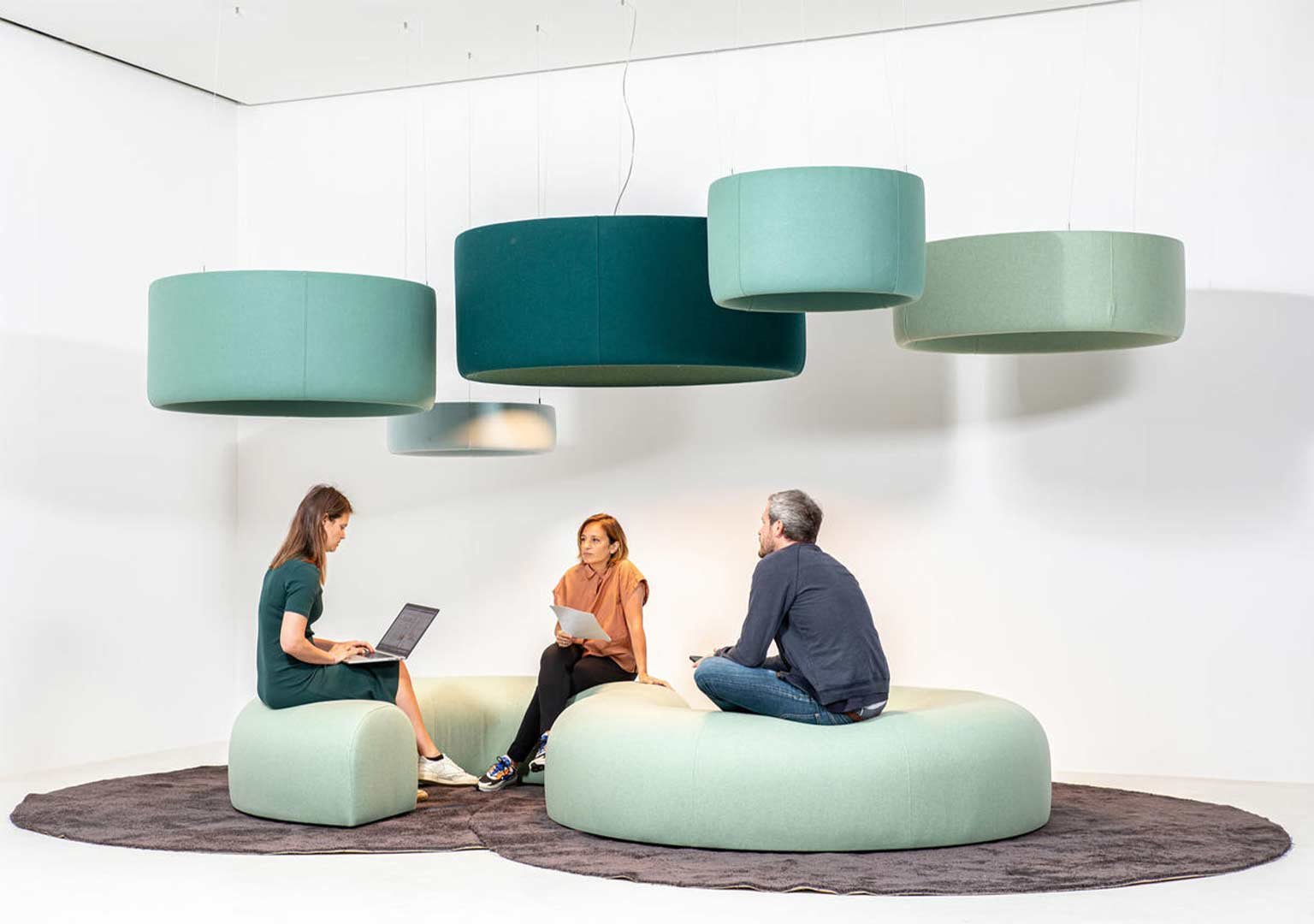
Acoustic seating solution BuzziCee from BuzziSpace
The well-being and productivity of employees are paramount. An optimized acoustic environment not only reduces stress and fosters concentration but also enhances communication and collaboration, key elements that drive innovation and success in any organization.
In essence, investing in acoustics optimization is investing in the future of your organization. It's more than just a design element—it's a critical enabler of a harmonious, efficient, and productive work environment. We encourage all businesses to embrace this perspective and make acoustics an integral part of their workspace strategy, leading the way to create workplaces that are not just places of work, but spaces that inspire, motivate, and nurture their greatest asset—their people.
Let's Connect
Contact us to learn more about our how we help you create acoustic social spaces.



